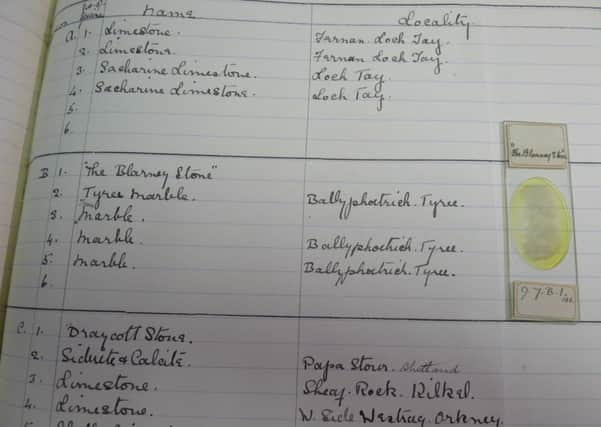Glasgow Uni researchers learn Blarney Stone origin


The stone, kissed by visitors to Blarney Castle in Cork in hope of bringing ‘the gift of the gab’, is a limestone that is around 330 million years old, according to the Hunterian’s curator Dr John Faithfull.
The discovery, based on a wafer-thin sheet taken from the stone in the mid-1800s, appears to debunk any link between the Blarney and the Stone of Destiny or Stonehenge.Dr Faithfull said: “This (discovery) indicates that it has nothing to do with the Stonehenge bluestones, or the sandstone of the current ‘Stone of Destiny’, now in Edinburgh Castle.”
Sample found by intern
Advertisement
Hide AdThe sample sat unnoticed among the Hunterian’s collection of 40,000 microscope slides, until it was found by an intern during the creation of a digital archive.
The Blarney sample is part of the rock and mineral thin-section collection of Professor Matthew Forster Heddle, a St Andrews University professor of geology and chemistry in the 19th century.
Dr Faithfull said: “We don’t know how Professor Heddle got the Blarney microscope slide, or whether he had it made himself, but he was a major scientific figure, with excellent contacts, and was always keen to acquire interesting samples for scientific investigation. However, in this case, he doesn’t seem to have published anything about the stone.”
Of the sample, Dr Faithfull said: “It was probably made between 1850 and 1880, during the period when new microscope techniques began to revolutionise our understanding of rocks, and how they form.
“Very few pieces of the Blarney Stone seem to exist outside Blarney Castle. Apart from our microscope slide, the only other one I’m aware of is in a monument at the University of Texas. However, this object seems to have its origins in a beer-fuelled party, and the genuineness of (that) fragment must be in doubt.”